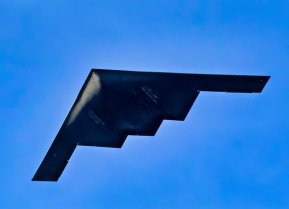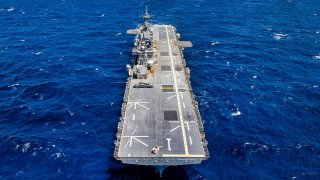Amphibious Assault Ships: The U.S. Navy's Mini Aircraft Carriers
Despite being the second-largest navy, the U.S. Navy outmatches the Chinese People’s Liberation Army Navy with superior capabilities, including 11 supercarriers and numerous submarines and guided-missile cruisers. A key advantage is its amphibious assault ships, the Landing Helicopter Dock (LHD) and Landing Helicopter Assault (LHA) warships.
Summary: Despite being the second-largest navy, the U.S. Navy outmatches the Chinese People’s Liberation Army Navy with superior capabilities, including 11 supercarriers and numerous submarines and guided-missile cruisers. A key advantage is its amphibious assault ships, the Landing Helicopter Dock (LHD) and Landing Helicopter Assault (LHA) warships. Designed for different missions, LHDs focus on marine landings with extensive aviation and amphibious vehicle support, while LHAs prioritize air operations. Both ship types are crucial for Marine Expeditionary Units (MEUs), enabling global peacetime presence and wartime response. The fleet includes the versatile Wasp-class LHDs, capable of carrying a mix of aircraft for various missions, highlighting the U.S. Navy's strategic flexibility and power projection.
U.S. Navy's Strategic Edge: The Power of Amphibious Assault Ships
The U.S. Navy is only the second-largest navy in the world – the Chinese People’s Liberation Army Navy is the largest. However, in most categories, the U.S. Navy vastly outperforms its Chinese adversary by fielding 11 supercarriers, dozens of submarines, and scores of guided-missile cruisers and destroyers.
That’s not all. The U.S. Navy has an ace up its sleeve in the form of amphibious assault ships.
Getting Marines to the Fight
The Navy operates two types of amphibious assault ships: Landing Helicopter Dock (LHD) warships and Landing Helicopter Assault (LHA) warships. At first glance, the two types look much the same – they appear as miniature aircraft carriers, and in fact they are the same size as other countries’ aircraft carriers and older types of U.S. flattops. However, they are designed for different missions.
LHD warships are designed to serve as landing platforms for Marines. They carry high numbers of troops, as well as the helicopters and amphibious vehicles to transport them into combat. To accommodate the large number of aircraft, combat vehicles, and troops, LHDs are equipped with big aviation compartments and well decks to launch and recover the amphibious craft.
Conversely, LHA warships are geared more toward air operations and have the ability to carry more aircraft at the cost of a limited capability to launch and recover amphibious craft. LHA warships can carry the same type of aircraft as their LHD cousins, but vastly more of them.
The main mission set of both LHD and LHA warships is to support the U.S. Marine Corps.
Marine Expeditionary Units (MEUs) deploy amphibious assault ships alongside aviation and logistics components. During peacetime, these Marine units travel around the world on amphibious assault ships, training with allied and partner forces but also ready to react in the event of a contingency anywhere. In wartime, MEUs deploy to combat, and they use amphibious assault ships as floating bases.
In terms of key aviation support, Marines fly AV-8B Harrier attack jets, F-35B Lightning II stealth fighter jets, AH-1 Cobra attack helicopters, CH-53 Super Stallion transport helicopters, and MV-22 Osprey transport helicopters.
There are only two AV-8B Harrier squadrons left in the Marine Corps. The venerable attack jet is being slowly phased out and replaced by the cutting-edge F-35B.
The Wasp-class LHD
The Wasp class came as an improvement of the Tawara class. It is the only LHD in service for the U.S. Navy, with seven warships active.
Although fairly similar in the exterior and carrying comparable capabilities, the Wasp class packs a longer deck that allows for more and different aircraft.
Depending on its particular role, the Wasp class can carry close to 30 aircraft. For example, in a sea control mode, Wasp-class LHDs can carry 20 AV-8B Harrier attack jets or F-35B Lightning II fighter jets, as well as 6 SH-60 Sea Hawk anti-submarine warfare helicopters. Although this is just a fraction of the aircraft that vessels like the Nimitz- and Ford-class carriers can transport, this is still an important capability and can complicate the decisionmaking process of an adversary.
About the Author
Stavros Atlamazoglou is a seasoned defense journalist specializing in special operations and a Hellenic Army veteran (national service with the 575th Marine Battalion and Army HQ). He holds a BA from Johns Hopkins University and an MA from the Johns Hopkins School of Advanced International Studies (SAIS). His work has been featured in Business Insider, Sandboxx, and SOFREP. Email the author: [email protected].


